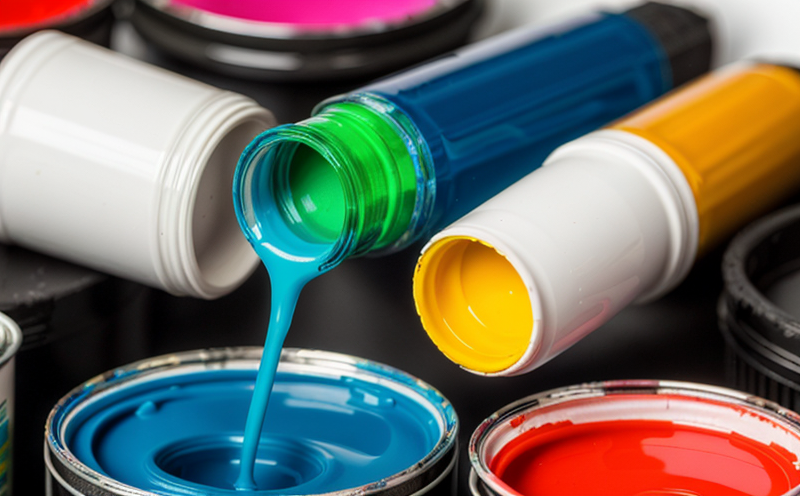OECD TG 432 Phototoxicity Testing of Nano Additive Containing Coatings
The OECD Test Guideline 432 evaluates the phototoxic potential of nano additives in coatings. This test is crucial for ensuring that materials used in paints and coatings do not cause harmful effects to human skin when exposed to light. The testing protocol is designed to mimic real-world conditions, making it an essential step before market release.
The importance of this test cannot be overstated, especially given the increasing use of nano additives in various industries. These materials are often used for their unique properties such as increased durability or enhanced optical performance. However, due to their size and potential interaction with light, they can also pose phototoxic risks. The OECD TG 432 provides a standardized approach to assess these risks.
The test is performed using specific equipment that ensures accurate results. It involves exposing the coating containing nano additives to simulated sunlight and measuring any changes in cell viability or other parameters indicative of phototoxicity. This section will delve deeper into the methodology, acceptance criteria, and real-world applications of this testing protocol.
For quality managers, compliance officers, R&D engineers, and procurement specialists, understanding the nuances of this test is vital. It helps them ensure that their products meet international standards and regulations. By conducting this test early in the development process, they can identify any potential issues and make necessary adjustments before market release.
The OECD TG 432 also plays a crucial role in risk assessment. By identifying phototoxic risks early on, companies can take proactive measures to mitigate these risks. This not only protects their reputation but also ensures compliance with international standards such as ISO, ASTM, EN, IEC, etc.
Real-world applications of this test are numerous and varied. For instance, in the automotive industry, it is used to ensure that paint finishes do not cause skin irritation when exposed to sunlight. In the construction sector, it helps in selecting coatings that meet phototoxicity standards for outdoor use. In the consumer goods industry, it ensures that paints and other coating products are safe for consumers.
Understanding the scope and methodology of this test is crucial for anyone involved in product development or quality assurance. It provides a clear roadmap for conducting tests and interpreting results accurately. This section will provide detailed information on these aspects to help you grasp the importance and application of OECD TG 432 in your industry.
Scope and Methodology
| Test Parameters | Description |
|---|---|
| Specimen Preparation | The specimen should be prepared following the guidelines specified in OECD TG 432. This includes ensuring that the coating is applied uniformly and that it dries completely before testing. |
| Light Source | A xenon lamp or other suitable light source should be used to simulate sunlight conditions. The intensity of the light should be controlled to match real-world exposure levels. |
| Cell Culture | Human cell lines are typically used for this test. They are exposed to the coated specimen under defined conditions, and their viability is measured before and after exposure. |
| Data Analysis | The results are analyzed statistically to determine if there has been a significant decrease in cell viability due to light exposure. Acceptance criteria define what constitutes an acceptable result. |
The methodology of the OECD TG 432 is designed to be robust and reproducible, ensuring consistent results across different laboratories. This table outlines some key aspects of specimen preparation, light source usage, cell culture procedures, and data analysis that are critical to the success of this test.
Why Choose This Test
- Regulatory Compliance: Ensures compliance with international standards like ISO 17639 and OECD TG 432, which are widely recognized in the industry.
- Risk Assessment: Identifies potential phototoxic risks early in the development process, allowing for timely adjustments to formulations.
- Product Safety: Guarantees that products do not cause skin irritation or other harmful effects when exposed to sunlight.
- Market Readiness: Prepares products for successful market entry by ensuring they meet all necessary safety and quality standards.
- Reputation Protection: Helps maintain a strong brand reputation by delivering safe, high-quality products.
- Cost Efficiency: By identifying issues early, this test helps avoid costly rework or recalls later in the product lifecycle.
- Customer Satisfaction: Ensures that customers receive products that are not only safe but also meet their expectations for performance and quality.
The benefits of choosing OECD TG 432 phototoxicity testing extend beyond regulatory compliance. It provides a comprehensive approach to product safety, ensuring that nano additives in coatings do not cause harmful effects when exposed to light. This test is an essential tool for anyone involved in the development and production of paints and coatings.
Competitive Advantage and Market Impact
The OECD TG 432 phototoxicity testing protocol provides a significant competitive advantage by ensuring that products meet or exceed international standards. This is particularly important given the increasing scrutiny on product safety and environmental impact. By conducting this test, companies can differentiate themselves in the market as leaders in safety and quality.
Compliance with OECD TG 432 also opens up new markets for companies. Many countries have stringent regulations regarding phototoxicity, and compliance is a key factor in gaining entry into these markets. This testing protocol helps companies meet these requirements, thereby expanding their customer base.
The test has a direct impact on the reputation of the company as well. By demonstrating a commitment to product safety and quality, companies can build trust with customers and stakeholders. This trust is crucial for maintaining long-term relationships and fostering brand loyalty.
Moreover, the results of this testing protocol can be used in marketing efforts to highlight the superior quality and safety of products. This can attract new customers and enhance the overall market position of the company. In summary, OECD TG 432 phototoxicity testing is not just a compliance requirement but also a strategic tool for gaining competitive advantage and driving market impact.





